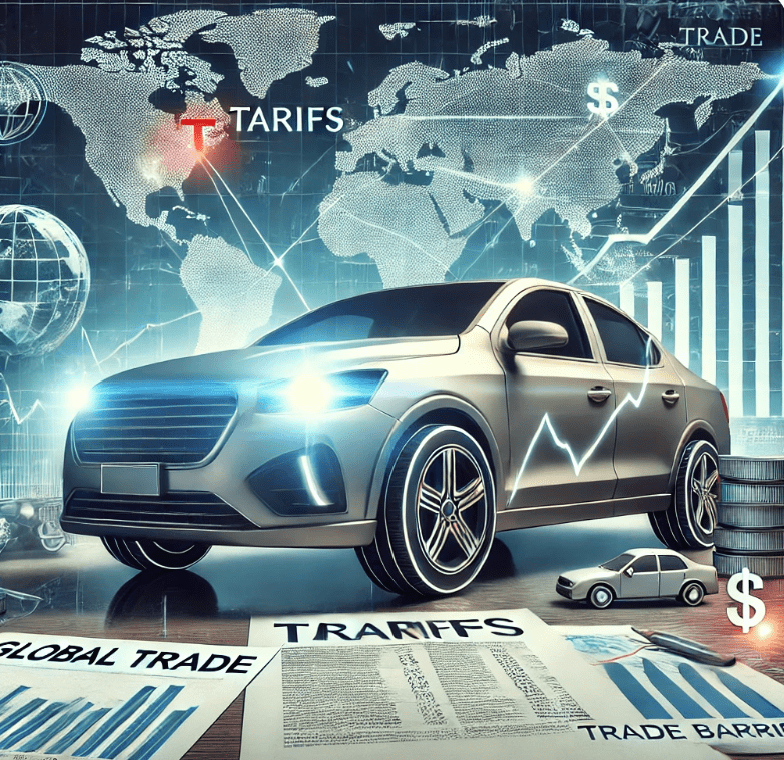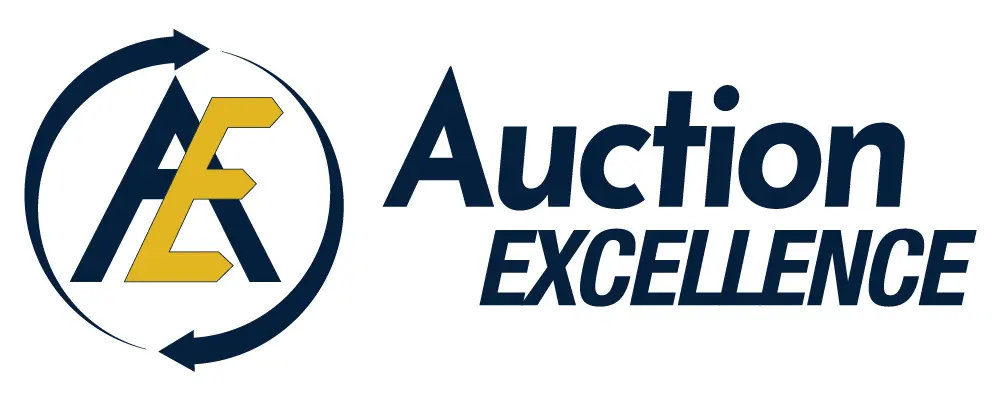Industry News and Analysis

The Auto Industry & Tariffs: Weighing the Pros & Cons
Tariff talk is everywhere and what does it mean to the auto industry. With the new 25% tariffs on auto imports, the industry faces major shifts in pricing, supply chains, and consumer demand. Are tariffs a necessary tool to protect U.S. manufacturing, or will they do more harm than good? Did a little research and this is what I found – What do you think?
The Purpose & History of Tariffs
– Tariffs are taxes on imported goods meant to protect domestic industries and encourage consumers to buy locally.
– After World War II, tariffs became less common in advanced economies due to their negative effects on trade, prices, and global economic relations.
The Mechanics of Tariffs
Tariffs come in different types:
– Ad Valorem Tariffs – A percentage of the item’s value.
– Specific Tariffs – A fixed fee per unit of goods.
– Tariff-Rate Quotas – Lower tariffs on imports up to a certain amount, then higher tariffs afterward.
Countries often impose tariffs to support developing industries, counteract unfair foreign subsidies, or protect national security interests.
Pros ✅ (Potential Benefits) in Auto Industry
– Encourages U.S. Manufacturing– Tariffs make it more expensive to import, leading to more domestic production & job growth.
– Protects U.S. Automakers from Unfair Trade Practices– Countries like China subsidize their auto industries, undercutting U.S. pricing.
– Strengthens Domestic Supply Chains– Reduces dependence on foreign-made parts like semiconductors & EV batteries.
– Boosts Used Car Values– If new cars become too expensive, demand for used cars rises, helping dealers.
– Encourages Green Tech Investment– Higher tariffs on imported EV batteries could push U.S. manufacturers to invest in domestic production.
Cons ❌ (Potential Downsides) in Auto Industry
– Higher Car Prices– A typical new vehicle could cost $3,000-$5,000 more due to increased production costs.
– Supply Chain Disruptions– 70% of U.S.-built cars rely on foreign parts, slowing down manufacturing.
– Potential Job Losses– Higher costs could reduce consumer demand, leading to factory shutdowns & layoffs.
– Retaliatory Tariffs– Canada, Mexico, and China may respond with their own tariffs, hurting U.S. auto exports.
– EV Market Could Slow Down– Rising costs for batteries & components may reduce EV adoption in the U.S..
Bottom Line: Tariffs impact every part of the auto industry—from manufacturing to dealerships to consumers.
General Auto News:
All-Electric Cars Now Account for One-Fifth of UK Market
In the UK, sales of fully electric vehicles have surged, now representing 21.3% of the market, up from less than 15% last year. Despite this growth, the figure falls short of the government’s target of 22% for 2024 and the 28% requirement for 2025. Overall new car registrations in the UK decreased by 2.5% in January. European manufacturers like BMW, Volkswagen, and Mercedes-Benz have increased their electric car deliveries, while Tesla’s sales dropped by 7%. Source: All-electric cars are now one fifth of UK market
Microeconomic Impact: The rise in EV sales indicates growing consumer acceptance, influencing automakers’ production and marketing strategies towards electric models.
Macroeconomic Impact: The shift towards electric vehicles changes supply chain input into the development of these vehicles vs. Ice vehicles and investments in related industries.
Renault Reactivates Talks with Foxconn Over Sale of Nissan Stake
Renault has resumed discussions with Taiwanese manufacturer Foxconn to sell its stake in Nissan, following the collapse of merger talks between Nissan and Honda. Renault currently holds a 36% share in Nissan and is seeking new investors, including technology companies like Apple. High-level talks have taken place between Renault’s CEO Luca De Meo and Foxconn’s Jun Seki, a former Nissan executive. Source: Stellantis, Foxconn form 50-50 JV on semiconductors for auto industry | Reuters
Microeconomic Impact: A potential sale could lead to shifts in Nissan’s strategic direction, affecting its operations, management, and product development.
Macroeconomic Impact: This move underscores the increasing collaboration between traditional automakers and technology firms, reflecting a broader industry trend towards integrating advanced technologies in vehicles.
Stellantis and Foxconn Form Joint Venture to Design Automotive Semiconductors
Carmaker Stellantis and iPhone assembler Foxconn have created a 50-50 joint venture to design and sell semiconductors for the automotive industry, with plans to commence operations in 2026. This collaboration aims to address the increasing demand for automotive chips and enhance the supply chain’s resilience. Source: Stellantis, Foxconn form 50-50 JV on semiconductors for auto industry | Reuters
Microeconomic Impact: The joint venture could lead to a more stable supply of semiconductors for Stellantis, reducing production delays and potentially lowering costs.
Macroeconomic Impact: This partnership highlights the growing convergence between the automotive and technology sectors, influencing global semiconductor supply chains and encouraging further collaborations across industries.
Auction Specific:
Carvana Leverages ADESA Sites to Enhance Used-Car Market Presence
Carvana Co. is reworking key auto auction real estate acquired nearly three years ago to bolster its used-car reconditioning capabilities and expand customer reach. This strategy aims to set the stage for future sales growth.
Source: https://www.autonews.com/retail/an-carvana-continues-adesa-auctions-evolution/
Microeconomic Impact: More efficient vehicle processing for Carvana, potentially leading to faster turnaround times and lower costs for customers and dealers using ADESA’s physical locations may see changes in competition or access to inventory.
Macroeconomic Impact: Marks a shift in the role of physical auto auctions, as major digital retailers incorporate them into their ecosystems. Could impact wholesale pricing and the structure of remarketing businesses as digital sales take priority.
Anticipated Surge of Off-Lease Electric Vehicles in 2026
Auto remarketers are preparing for an influx of used electric vehicles entering wholesale auctions in 2026 and 2027 as current leases mature. This anticipated wave of EVs presents both opportunities and challenges for the auction industry.
Source: https://www.autonews.com/retail/an-used-car-remarketers-eye-ev-wave/
Microeconomic Impact: Used EV prices may become more competitive, giving consumers greater access to affordable electric models. Auctions and dealerships may need to adapt to new challenges, including battery health assessments and resale demand shifts.
Macroeconomic Impact: Could help accelerate EV adoption by making second-hand electric cars more accessible. A flood of off-lease EVs might depress residual values, impacting lease pricing strategies for automakers.
J.D. Power’s Online Auction Platform Targets 1,000 Dealerships
J.D. Power has set a goal to enlist 1,000 dealerships for its online auction marketplace, which focuses exclusively on late-model used vehicles. The platform offers features such as live simulcasts and automated bidding, aiming to modernize the auction process.
Source: https://www.autonews.com/events/nada-show/an-nada-jd-power-used-marketplace/
Microeconomic Impact: More dealerships gaining access to streamlined digital auction technology, reducing reliance on traditional physical auctions. Potentially lower transaction costs and increased efficiency in the remarketing process.
Macroeconomic Impact: Accelerates the trend toward digital transformation in wholesale vehicle sales. Could put pressure on legacy auction houses to modernize or risk obsolescence.
Bottom Line: Auto dealerships and auction houses must embrace digital transformation, EV market trends, and supply chain shifts to remain competitive in a rapidly evolving industry.
#AutoAuctions #UsedCars #CarMarket #EVs #AutoIndustry #WholesaleAutomotive
